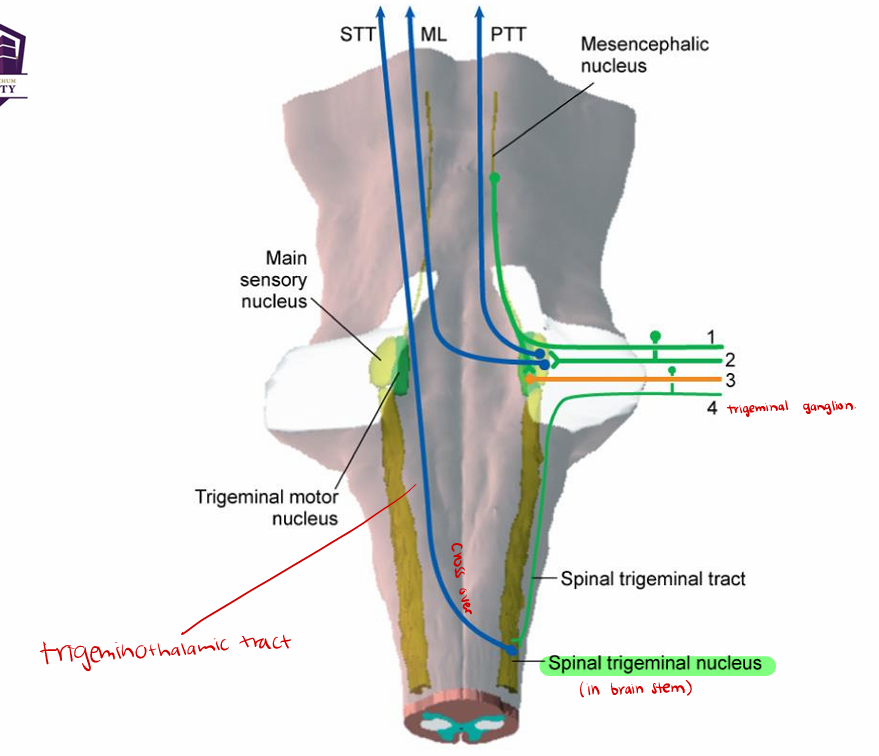Sensory Systems: Pain and Temperature Sensation
1/8
There's no tags or description
Looks like no tags are added yet.
Name | Mastery | Learn | Test | Matching | Spaced |
|---|
No study sessions yet.
9 Terms
Modalities and Nerve Endings
Deep (wide spread) pain (nociceptors): free nerve endings, group IV unmyelinated
Prinking (localized) pain (nociceptors): free nerve endings, group III myelinated
Temperature (thermoreceptors): groups III and IV, distinct cool (III) and warm (IV) endings
Light ““crude” touch and pressure (tickle, itch): groups III and IV
*free nerve endings: free from any other structures/ bare nerve ending entering skin to pick up stimuli

Experiment: Pain and Temperature
Area of overlap between cold and warm receptors allows for sensitivity up to 1° temperature changes
As the temperature increases, the response of the nociceptor increases. The nociceptor stops responding as soon as the stimulus is removed
As the temperature increases, the subject gives a higher pain rating, but there is a slight delay in response
Even after the stimulus has been removed, the subject still notes pain, due to slow conduction velocity (slow conducting and slow adapting)
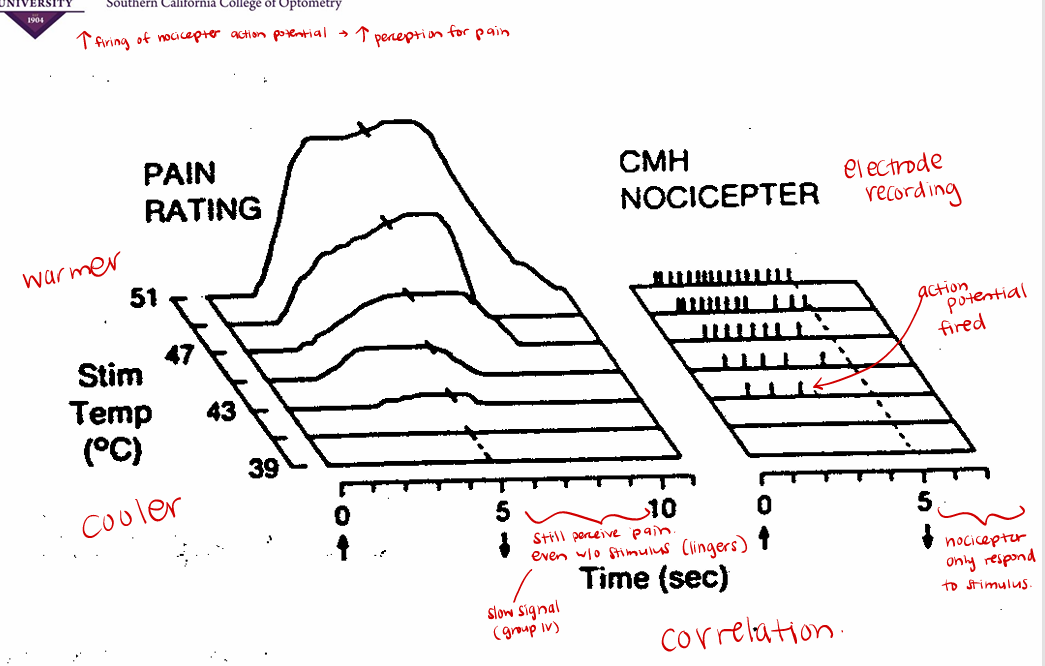
Transduction mechanism
tissue damage releases intracellular materials (K+) which depolarizes nociceptor
thermal or mechanical alteration of ion channels also depolarizes
Cold: depolarized when the membrane becomes more rigid
Hot: depolarized when the membrane becomes more fluid
Thresholds vary
low for touch, temperature (tell difference of 1 C)
high for pain (variable/depends on person)
Slow to very slow adaptation
Single stimulus may lead to very long increase in action potential frequency
Very slow: No longer responding to stimuli
Slow: will always response to stimulus because adaptation is low

Central Connections -- Pain & Temperature (body)
Cell bodies of primary afferents in dorsal root ganglia
First synapses in spinal cord dorsal horn (posterior)
Local reflex circuits (immediate to protect from pain/heat/cold - recoil back)
DRG synapses at the posterior horn on substantia gelatinosa (posterior) or dorsal funicular gray/nucleus proprius (more anterior) → anterior horn motor neuron → muscle for withdrawal reflex/flexor reflex
Rapid because no communication with the brain
Interaction with other pathways (dim/reduce painful stimulus)
controls the magnitude of the perception of pain (increase or decrease)
Second order fibers cross midline to form spinothalamic tract (body)
Thalamic relay in ventral posterior lateral (VPL, body) nucleus
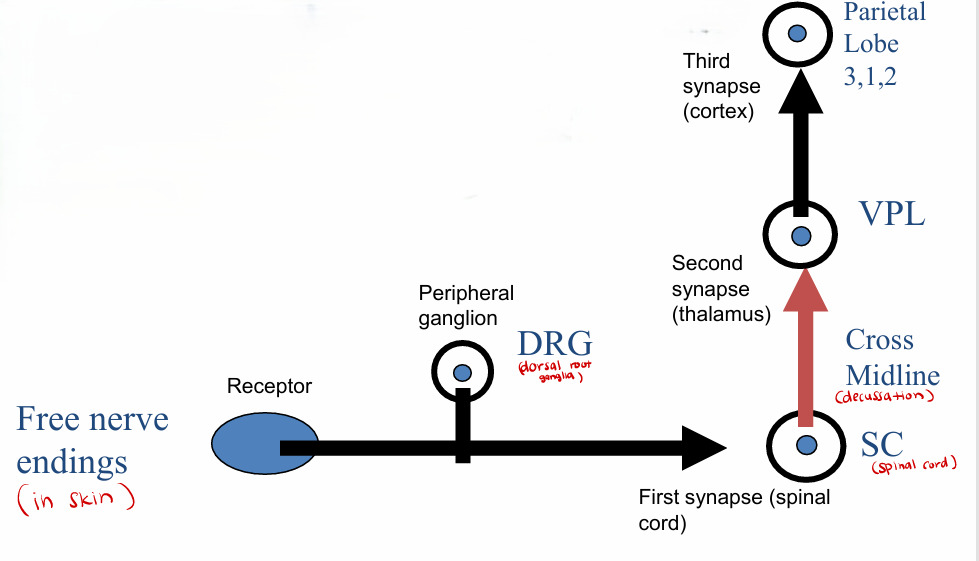
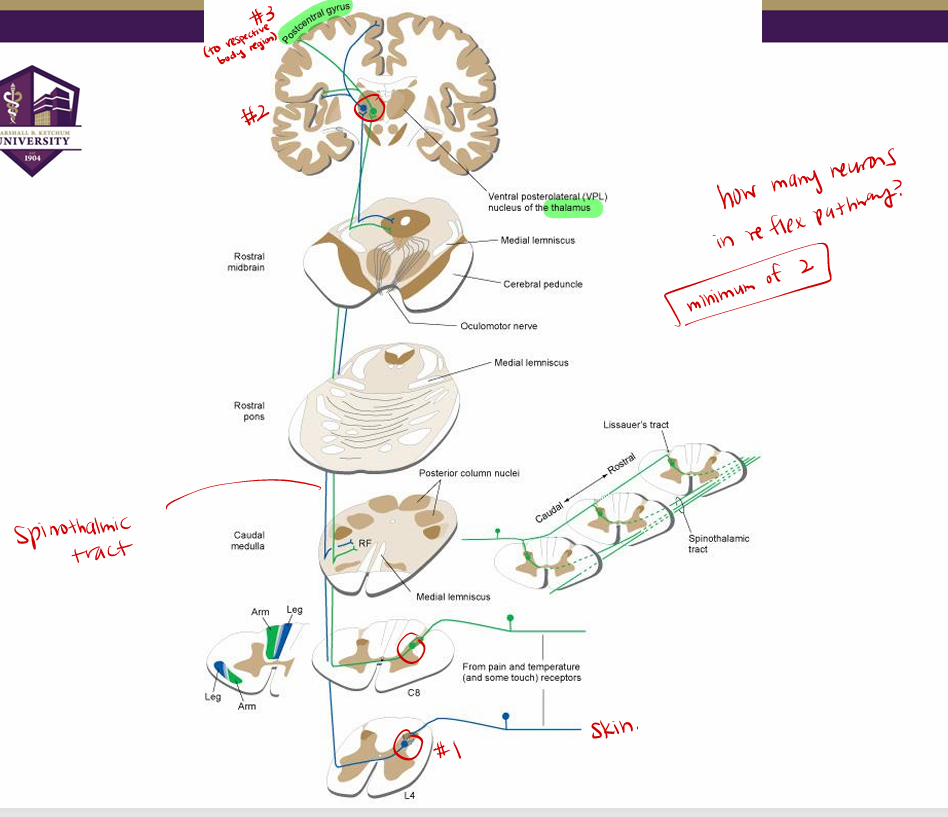
Central Connections -- Pain & Temperature (body) Endings
Somatotopic destination in postcentral gyrus, parietal lobe (Brodmann areas 3,1,2)
leg on medial surface; upper limb dorsal & lateral
Additional endings in brainstem reticular formation, hypothalamus
input to pleasure/pain/emotion pathways, etc.
Second order fibers cross midline to form trigeminothalamic tract (face)
Thalamic relay in ventral posterior medial (VPM, face) nucleus
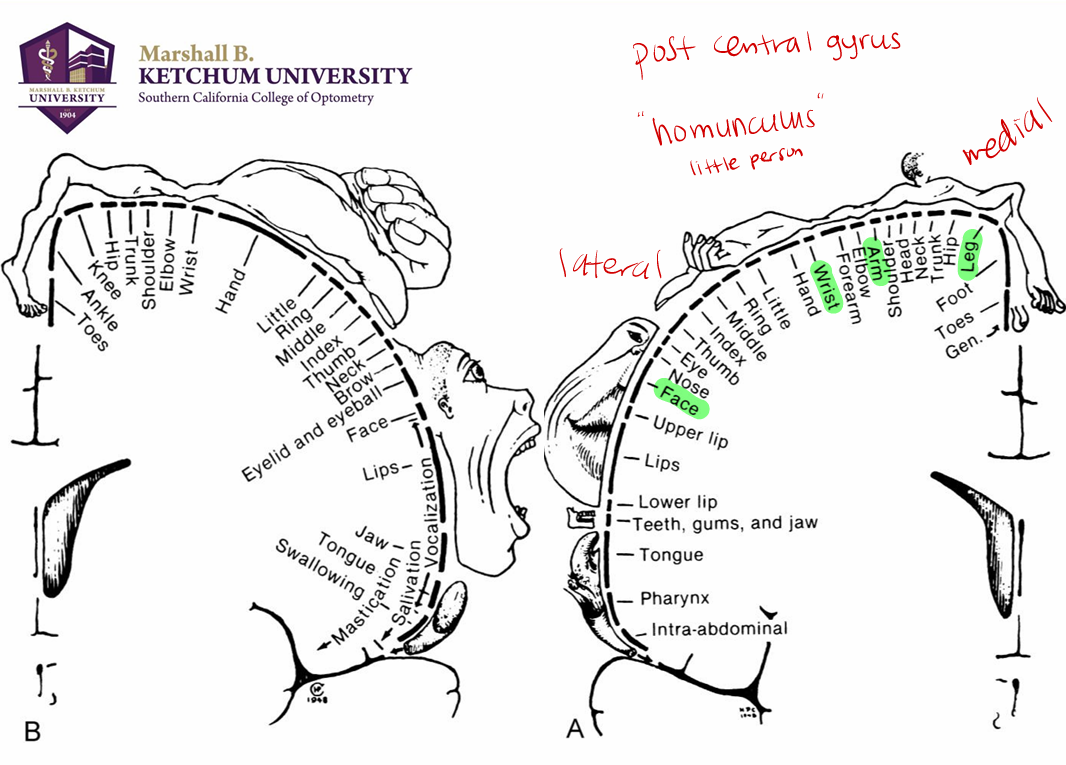
Central Connections -- Pain & Temperature (head)
Cell bodies of primary afferents in cranial nerve (mostly V) ganglia
First synapses in spinal trigeminal nucleus of brainstem
Local reflex circuits (poked → rub → reduce sensation)
Interaction with other pathways
Second order fibers cross midline to form trigeminothalamic tract (face)
Thalamic relay in ventral posterior medial (VPM, face) nucleus
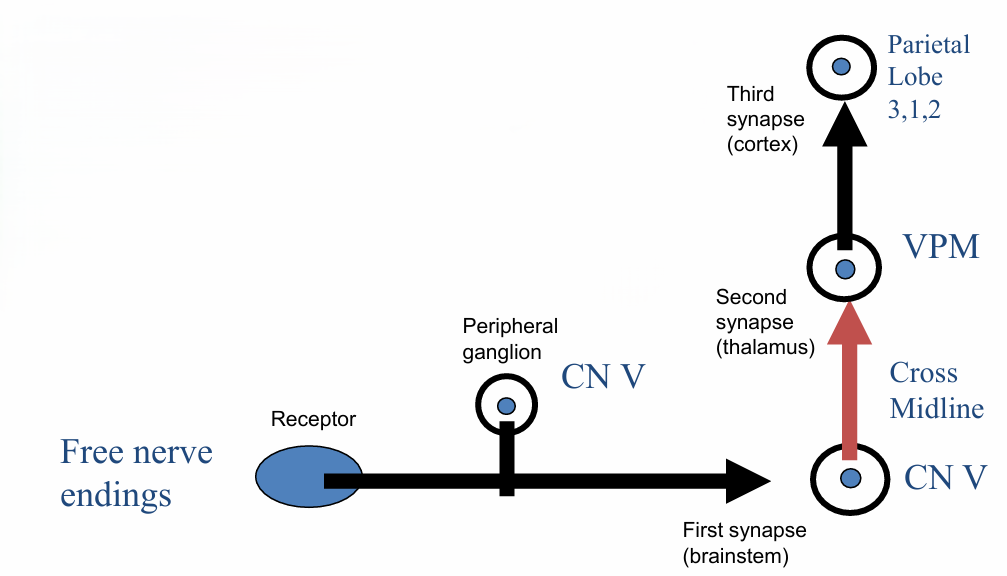
Central Connections -- Pain & Temperature (head) Endings
Somatotopic destination in postcentral gyrus, parietal lobe (Brodmann areas 3,1,2)
face ventral & lateral
Additional endings in brainstem reticular formation, hypothalamus
input to pleasure/pain/emotion pathways, etc
